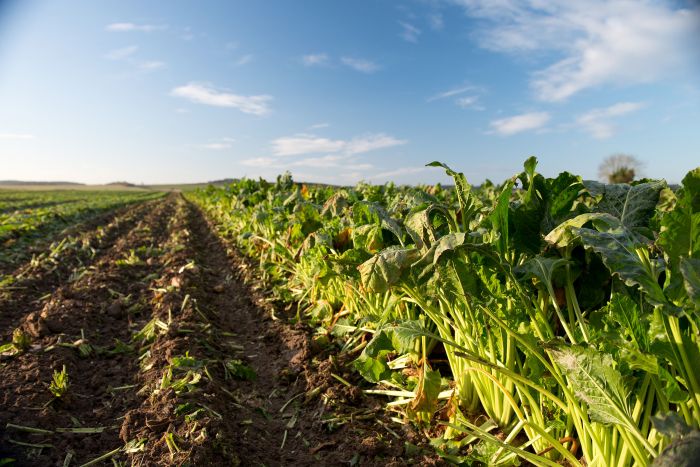
A new sugar beet fungicide, Armure, will help growers and agronomists to tackle all the key foliar diseases this season. Armure, from Syngenta is approved for Rust; Powdery Mildew; Ramularia and Cercospora, reported Syngenta Field Technical Manager, Simon Roberts.
Speaking at the BBRO Open Days this week (12 May 2015), he advocated that the optimised formulation of two tried and tested triazoles, difenoconazole and propiconazole, will prove a direct replacement for one of the company’s previous leading beet fungicides, Spyrale.
“Armure now has the added advantage of the stronger curative and protectant triazole activity,” he advised.” It is recommended as the first spray when the crop reaches full ground cover (BBCH 40), to prevent early disease development.
“For later crops, it can be followed by the strobilurin, Priori Xtra, to complete the green leaf enhancement through to lifting.”
With this season’s beet now growing strongly - after a relatively early sowing but cold and slow start - crops are set to reach full ground cover within a few weeks. However, damp conditions persist, Rust is likely to be the first disease to strike at around the same time, warned Mr Roberts.
Dr Mark Stevens of BBRO highlighted that whilst Powdery Mildew has historically been seen as the key foliar disease, Rust has become more prevalent over the past two to three seasons. “That could primarily be down to weather conditions, but most of the current leading sugar beet varieties, including those in the ground this season, have a lower resistance to Rust.”
He pointed out that Ramularia can also cause problems in cool, damp conditions, whilst growers should remain aware of the risk of Cercospora, which is a major issue across large parts of Europe.
Dr Stevens advocated that all beet crops should receive at least one fungicide treatment, with any cops destined for a post-October lifting benefitting from a second spray. Crops that are to be left until after Christmas – which has seen some of the very highest yields in recent years – may see a further benefit from a three-spray programme.
“Open autumns, with milder weather and sunnier condition, can continue to drive yield and sugar content of beet in an extended season, provided they have retained the green leaf area,” he added. “Keeping the canopy clean and healthy also aids frost protection for later lifting.”
Simon Roberts advised sugar beet and fodder beet growers can make up to two applications of Armure, at a rate of 0.6l/ha. Initial applications, at early canopy cover, should be applied in a water volume of 200 l/ha, however later applications in dense crops may benefit from increasing water volume to 300 l/ha and using angled nozzles - to improve penetration to lower leaves and root crown. The harvest interval is 21 days from application, he added.
